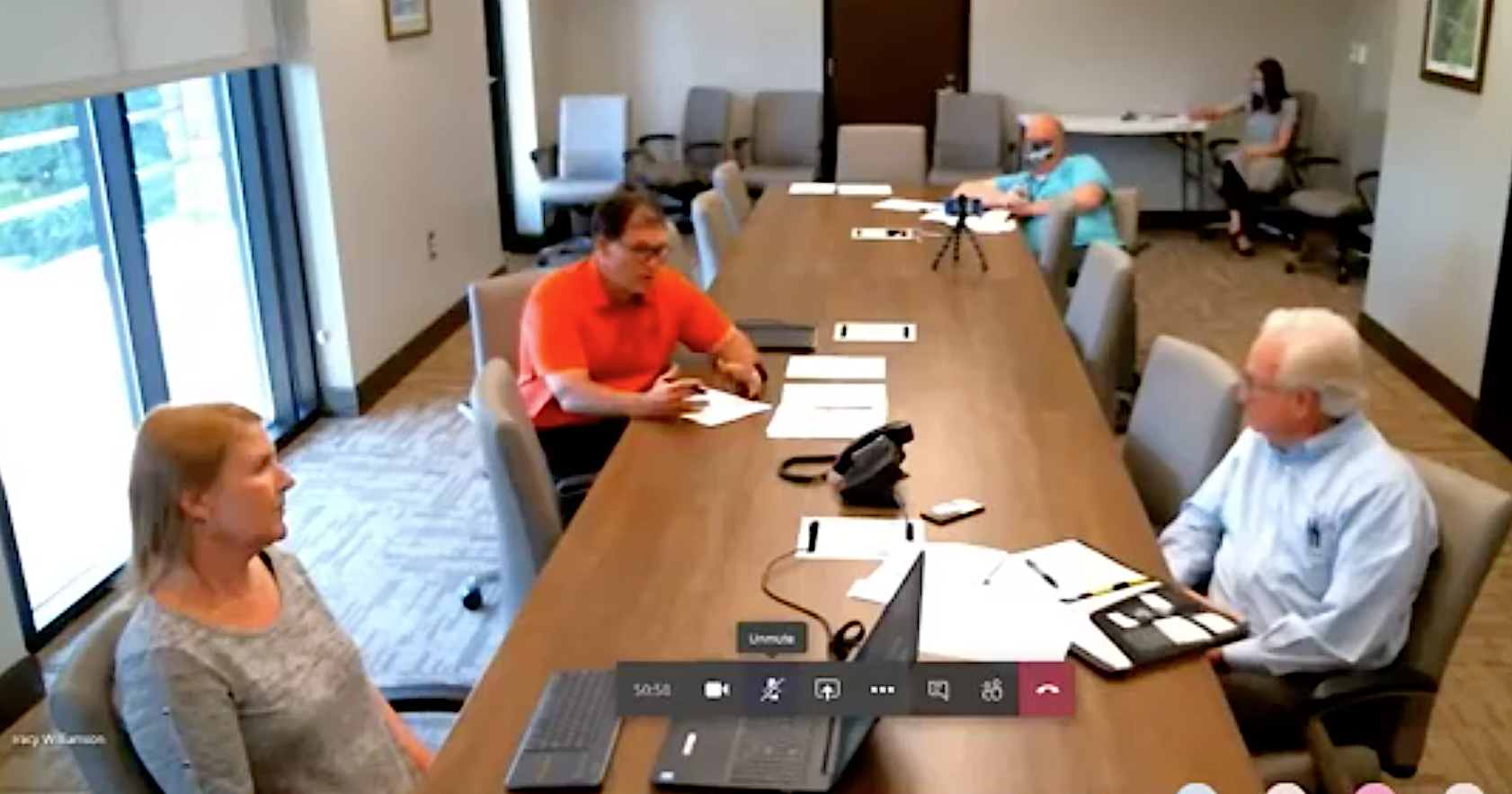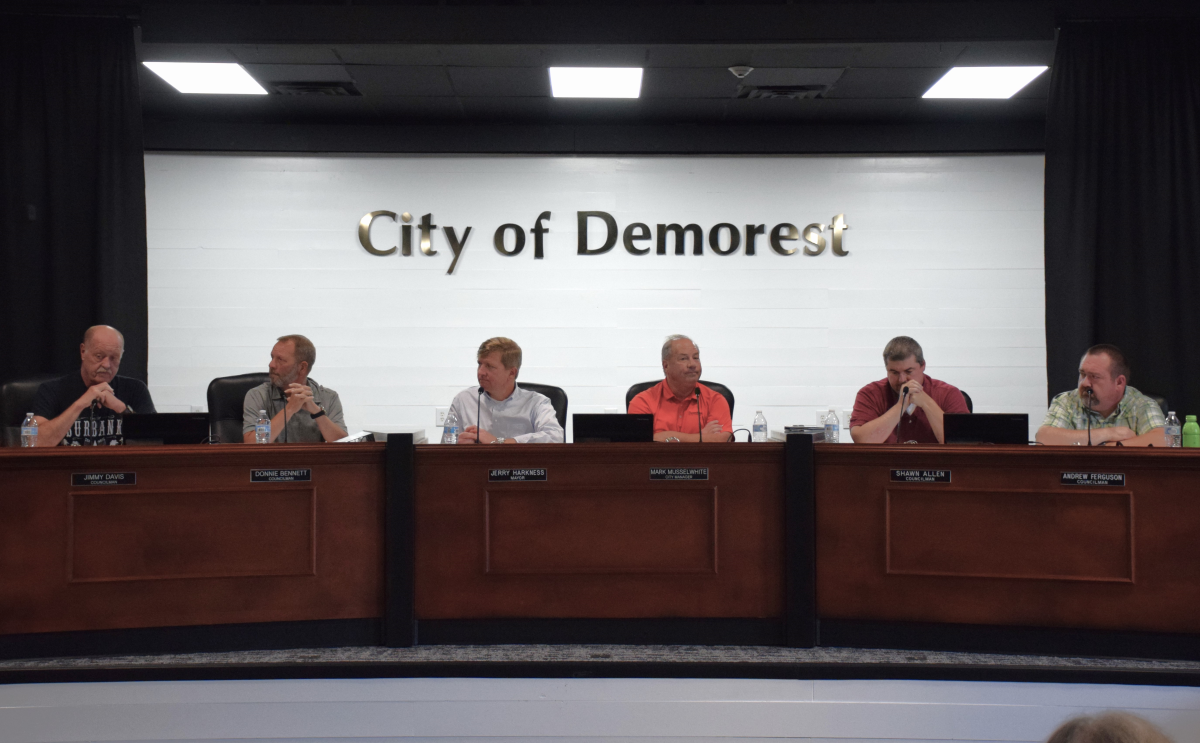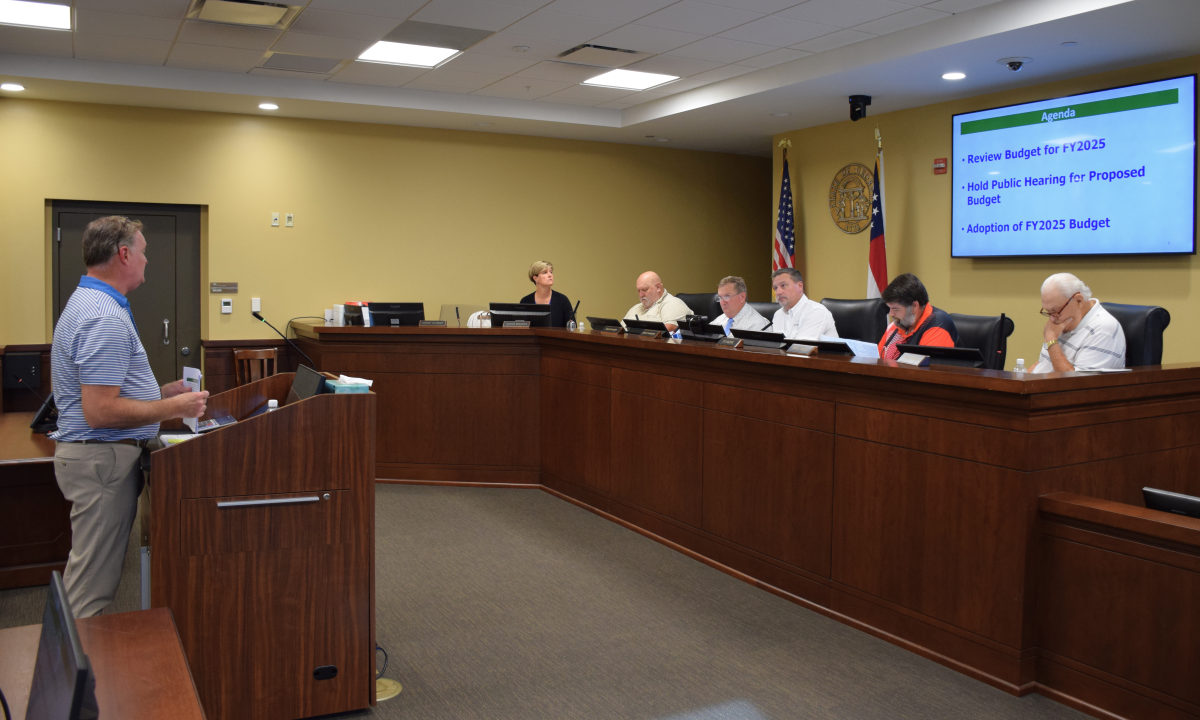
“We will continue to fight for what is right!”
That’s Cornelia City Manager Dee Anderson’s response to the Habersham County Commission’s decision Monday night to base projected 2020 SPLOST distributions on population instead of a hybrid formula he and other city leaders argue would be more equitable.
Under the population plan, the county would receive $2 million more in projected SPLOST funding than it would under the hybrid plan. Cornelia, Clarkesville, and Tallulah Falls would receive significantly less. Alto, Baldwin, Demorest, and Mt. Airy would receive the same amount under either plan, according to an official analysis (see chart below).
Commissioners Dustin Mealor, Tim Stamey, and Jimmy Tench voted in favor of the population plan. Commissioners Stacy Hall and Natalie Crawford voted in favor of the hybrid plan.
The population plan passed on the 3-2 vote.
Competing distribution models
Mealor led the charge in favor of the population plan saying it would provide equal funding for every citizen regardless of where they live.
Citing figures he calculated, Mealor said the straight population formula assigns a dollar value per citizen of about $978. “If we go by the composite formula, however, Tallulah Falls goes to $2,268 and change [per citize], Cornelia’s $1,372 and change, Clarkesville is $1,111 and change but the county citizens are $913,” Mealor said. “Having the county citizens worth less than all other citizens in the county when the county population is 71.4% of the county, that’s not something that I agree with.”
Commissioner Natalie Crawford characterized that as an oversimplification.
“I don’t think it’s about what our citizens are worth when we consider that all of the county residents, whether they live within city limits or in the unincorporated areas, have to go into those commercial city centers that we just talked about either to go to work or to purchase their goods,” Crawford said. “So, I understand the argument, I just want to be careful of language assigning a dollar value per citizen when it’s a little more complicated than that.”
Commissioner Stacy Hall also pushed for the hybrid plan which has been endorsed by half of the cities in the county.
“My goal when we set out on this task was I wanted everybody to win in this situation,” Hall said. “If you go with a straight population model Tallulah falls is a big loser. Cornelia gets less and Clarkesville gets less. My goal was to compromise so that everybody wins.”
Even with reduced SPLOST funding under the hybrid plan, Habersham County would still be up $9.5 million over the previous SPLOST which raised $30 million for capital projects.
If approved by voters, the 2020 SPLOST is anticipated to raise a total of $47 million over six years. Of that, $5 million must be designated for the Tier 2 Hospital Bond Payments. The remainder would be distributed for capital projects.
“My opinion is that this is a more equitable option for all of the cities across the board,” Crawford said. “All cities are made whole. They’re not seeing a reduction in what they would receive under the population formula and that is, in terms of equity, what we are attempting to do across the board.”
During Monday’s meeting, Anderson and Cornelia Mayor John Borrow both spoke in favor of the hybrid plan. Commissioners supporting the population formula were not swayed.
“The county has stuff we provide everyone whether they’re in the county or not with our recreational facilities, our jail,” said Commissioner Tim Stamey. “You can look at it several different ways but the one fair way, I do believe, is by population.”
Getting the cities onboard
In order for any of the proposed funding to be available to any of the involved parties, Habersham County voters must first approve SPLOST. The county hopes to get it on the ballot in November. But before that can happen, at least half of Habersham’s seven municipalities must sign an intergovernmental agreement (IGA) signifying their support.
That may prove difficult.
“We will not sign an IGA that drops our revenue from the current SPLOST,” Anderson says. “I hope that the other cities who have supported the hybrid model will stand with us so that the county commissioners will have to sit down with us as a group as we have requested for several weeks.”
If the county and cities fail to reach an agreement, then the county can only do a 5-year SPLOST. That would drop revenue by $8 million and could only be split by population and that says Anderson “would cost everyone.”
Watch SPLOST discussion below
This article has been updated with additional information








